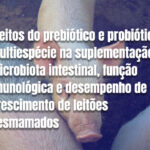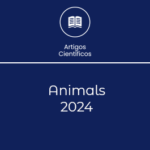The objective of this study was to evaluate the effect of increasing doses of bacterial phytase (RONOZYME HiPhos) on performance and carcass characteristics of growing and finishing pigs. The study included 120 castrated males with initial weight of 23.21 ± 1.91 kg
and 68 days of age, distributed in a randomized block design with five treatments and eight replicates with three animals each. The pigs were fed five corn-soybean meal-based diets: positive control (PC), supplemented with inorganic phosphorus and calcium; negative control (NC), with 0.13% reduction in available phosphorus and 0.11% in calcium; and three NC diets supplemented with 1,000, 2,000, and 3,000 phytase units (FYT)/kg in the feed. Compared with the NC diets without phytase, diets with 1,000, 2,000, and 3,000 FYT/kg inclusion increased the daily weight gain by +12% (quadratic, p<0.05) during the growing I period; +2.9, +2.9, and +10.5% (linear, p<0.01), respectively, during the growing II period; and +4.1, +5.1, and +8.2% (linear, p<0.001), respectively, over the entire experimental period. The
daily feed intake increased by 0, +2.8, and +4.3% (linear, p<0.05), respectively, considering the entire experimental period; and the final live weight increased by +3.2, +4.2, and +6.1% (linear, p<0.001), respectively. The phytase treatments did not influence feed conversion ratio, carcass weight and yield, backfat thickness, loin depth and carcass lean meat. According to the European Carcass Classification (SEUROP), however, the animals fed the PC diet and the three phytase levels had more carcasses classified as E (between 55–60%
lean meat) when compared to carcasses of pigs fed the NC. Supplementing increasing levels of phytase to a corn- and soybean meal-based diet with inorganic P and Ca reduction improved daily weight gain and feed intake of growing pigs, and such effects were maintained until slaughter age.
Increasing doses of phytase from Citrobacter braakii in diets with reduced inorganic phosphorus and calcium improve growth performance and lean meat of growing and finishing pigs

Conheça nossas redes sociais:





